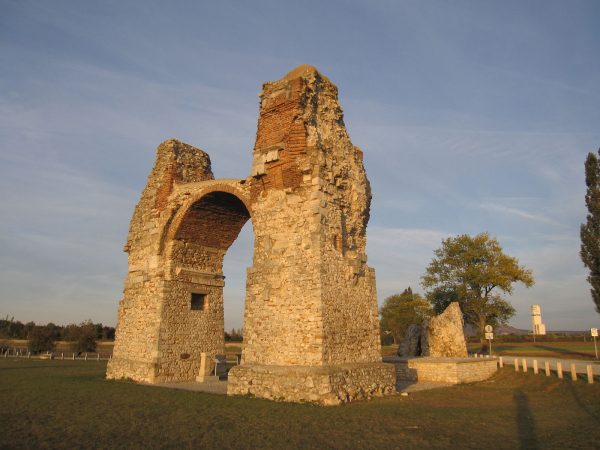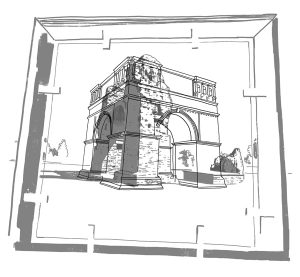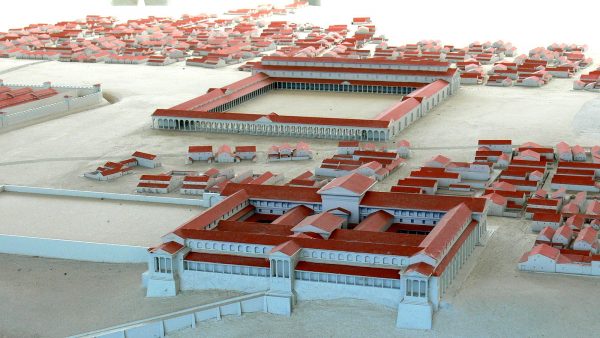The remains of Carnuntum, an ancient Roman city and military fort complex, sprawl out along the edge of the Danube River in Austria near Vienna. Visitors travel from around the world to explore this large, open-air museum and learn from pieces of the past. [Note: This short story was adapted from the NYT best-seller: The 99% Invisible City].

Remnants at the site can be seen in various states of disrepair and reconstruction. Some of the buildings lie in ruins while others have been stabilized or rebuilt using traditional techniques and materials.

Among these various built artifacts sits a huge triumphal monument believed to have been erected by Emperor Constantius II, who presumably commissioned it to commemorate his military victories. This massive quadrifrons memorial was later theorized in Medieval times to be the four-faced tomb of a pagan giant, leading it to be called Heidentor, or “Heathen’s Gate.” (Ironically, Constantius II was an Arian Christian and rather infamous for persecuting pagans.)

Over the centuries, this arched monument has partially collapsed. While it has not been physically reconstructed, its historic form has been brought back to life for visitors in a simple yet compelling way. Near the ruin sits a transparent panel mounted on a pair of metal supports, like a see-through plaque. On that panel is a line drawing. When a viewer lines up the traced illustration with the structure, they can see the outline of the monument’s original shape overlaid on the crumbling remnants, allowing them to visualize past and present at the same time. It’s a straightforward trick, but an effective one.

These types of heritage sites attract all kinds of attention, from archeological to aesthetic, but competing interests can complicate decisions about preservation, stabilization and reconstruction. Most people can agree that preserving ancient historical sites is a good thing, but the process of deciding how to intervene can be contentious.
A single-period restoration approach, for instance, can collapse the complex history of a place into one moment in time that cannot possibly represent the entire history of any building or other structure. Navigating nuanced questions about what to maintain or change is an ongoing cultural challenge for those interested in preserving historical buildings, both for now and for future generations.
In The 99% Invisible City: A Field Guide to the Hidden World of Everyday Design, New York Times bestselling authors Roman Mars and Kurt Kohlstedt uncover engaging stories about all the thought that goes into design that most people don’t think about. If you enjoyed this brief sneak peek into the volume’s ethos, be sure to check out the book as well!



Leave a Comment
Share